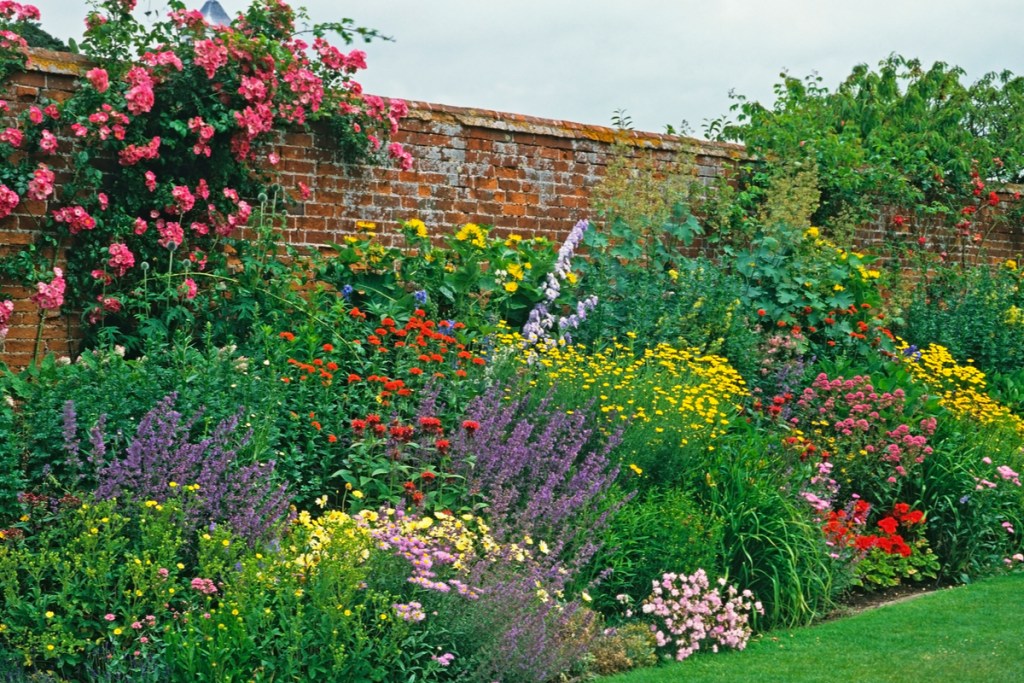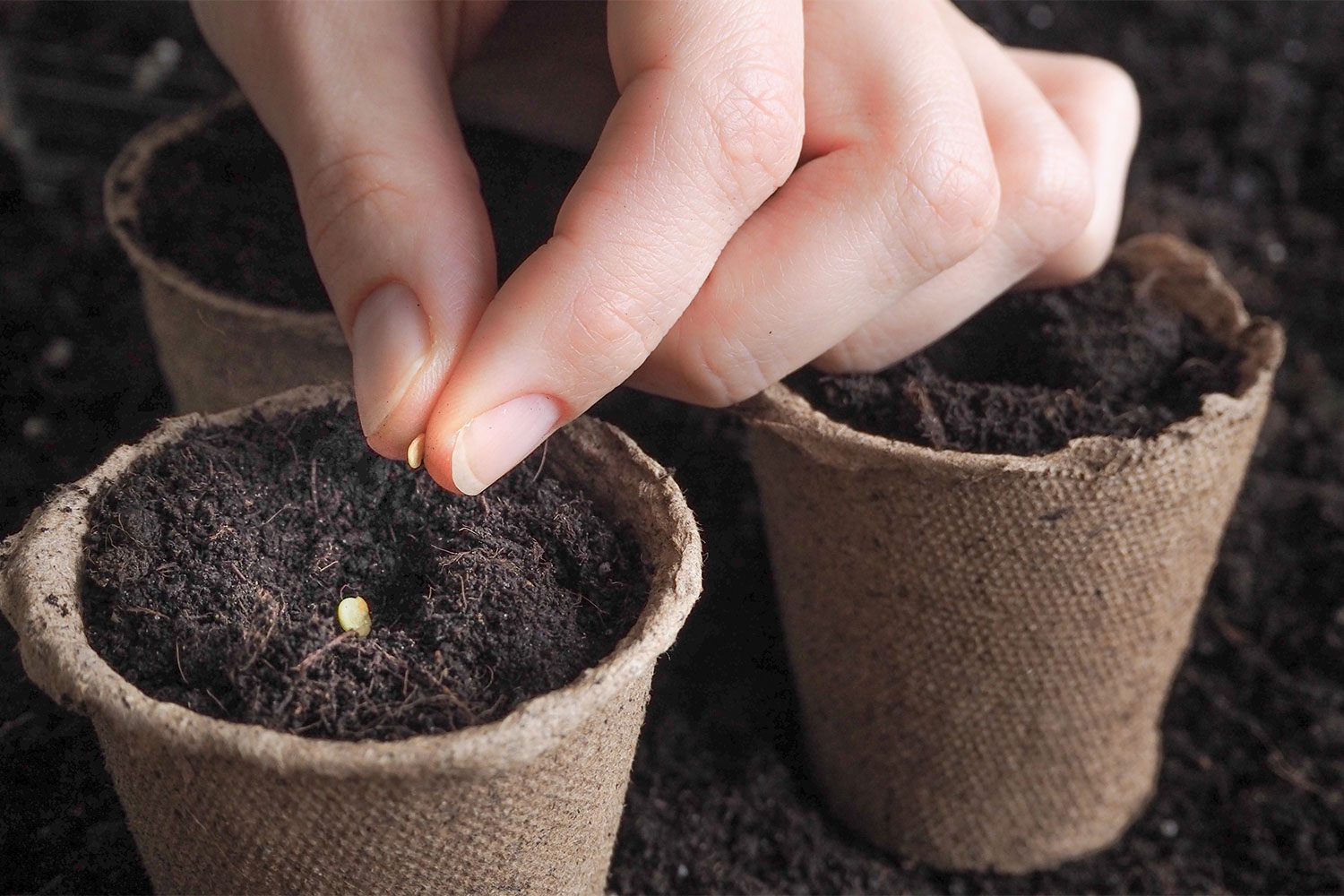
Gardening offers countless opportunities to get creative. We can design garden layouts, invent new recipes with homegrown produce, or make herbal wreaths, for example. The garden is also a perfect outlet for those with interests in natural sciences. Botany, agronomy, ecology, and chemistry contribute to healthy plants and sustainable systems. Developing new plant varieties is a way to enjoy the scientific and creative aspects of gardening simultaneously.
In one way or another, humans have impacted plant development throughout our existence. But we’ve only been doing it intentionally for about 10,000 years by selecting our favorite seeds and replanting them. In the mid 1800s, Gregor Mendel was the first scientist to hand-pollinate plants in order to study the ways that certain traits pass from parent to offspring. Now gardeners cross pollinate flowers and vegetables in their efforts to grow new colored flowers or bigger vegetables and to improve disease resistance. Read on to learn how it’s done.
How does cross-pollination work?
Plants fall into one of two categories when it comes to pollination. Self-pollinating plants can produce one or more flowers that can pollinate themselves or each other. Cross-pollination occurs when pollen from a plant fertilizes a flower from another plant that is the same species but a different variety — or, on more rare occasions, a different but related species.
Since cross-pollinating requires multiple plants, there’s more genetic diversity and more opportunity to create interesting colors, shapes, or patterns. You can use this to your advantage, cross-pollinating two different plants in an attempt to create a specific flower color.
You can cross-pollinate your plants by planting multiple varieties of the same plant next to each other and hoping a pollinator does the work; but, the more reliable method is to hand pollinate your plants. There are two ways to go about this, depending on the shape of the flower and your preferences. You can pick one of the flowers and rub it on the other flower, or you can gather pollen from one flower using a cotton swab or paint brush and apply it to the other flower.
If you have a particular goal in mind and want to be especially thorough, you can place a small bag or other material over the flower after cross-pollinating it to keep pollinators out. This ensures that the flower uses only the pollen you want it to use. The seeds that that flower produces will show the results of your cross-pollination, so you’ll need to collect and plant those seeds to find out the results.
Learn to identify the parts of a flower
Flowers have male and female parts that work together to make seeds. The female pistil is the ovule producing part of the plant. The pistil is made up of the ovary, which often supports a long style and a stigma at its tip. The stigma is the part that receives pollen. The male flower part is called the stamen. It is typically configured with a slender filament supporting the pollen-producing anther. In a pollinated flower, the ovary matures to become a fruit and the ovule matures to become a seed.
Plant varieties are groups of plants within the same species that exhibit certain similar unique characteristics, such as flower color. Varieties typically produce seeds that are “true to type.” In other words, they exhibit the same unique characteristics as the parent plant. Cross pollination is when pollen is transmitted from one variety to a different variety. The genetics of the two varieties are mingled within the seeds that are produced. The plants that grow from those seeds exhibit characteristics of both parent plants.
The results of cross pollination can be hard to predict. For instance, crossing a blue flowered variety with a red flowered variety could have a range of results. The offspring may inherit the same flower color as one of the parents, or a blend of both parents’ colors, or a completely different color. And, results could be different for each seed that was produced. Part of the fun of cross pollination is playing this mystery game and finding out what will happen.
Cross-pollinate flowers to blend the traits you like best
In order to cross pollinate flowers, you’ll need flowering plants and a few simple tools. The reproductive structures of each plant species have a slightly different appearance, so you’ll also need to familiarize yourself with the anatomy of the flower. Find the stamen and anther, and then locate the pistil and stigma. You will be transferring pollen from a flower’s anther on one plant to the stigma of a flower on a different plant.
Determine which flower will receive pollen and become the seed bearer. Use a pair of tweezers to remove the stamens from this flower. Mark the flower so you can find it again easily. Then identify the flower on the plant that will provide the pollen. Use a cotton swab or camel hair brush to collect pollen and transfer it to the stigma on the flower with stamens removed. Then cover the newly pollinated flower with a plastic bag to prevent additional natural pollination.
Grow flowers with new colors and more
Most of the flowers in garden centers and seed catalogs came from plant development programs that include cross pollination and selection. Many were selected from naturally occurring crosses when different varieties grew near one another. Others were the results of intentional cross-pollination by people. Not only can new flower colors come from your efforts, but new flower shapes, foliage patterns, disease resistance, and other traits may arise.

Start with open-pollinated flowers
Some fun flowers to cross pollinate include nasturtiums, petunias, poppies, snapdragons, violas, and zinnias. Read plant and seed labels to find out whether your plants are open-pollinated or hybrid. Open-pollinated flowers are good to use for cross-pollination projects, but hybrid flowers are not.
Open-pollinated flowers can be cross-pollinated because they produce ovules and pollen that are genetically the same as their parents. This consistency allows a grower to choose flowers from any healthy plant with the confidence of getting the same genetics. The opposite of open-pollinated is hybrid. Hybrid plants are the result of cross-pollination, meaning that their parent plants were of two different varieties. Hybrid plants present two problems for seed savers. First, they are often sterile. Second, if they are not sterile, their seeds do not come true to type. It’s best to avoid using hybrid plants for cross-pollination.
Allow the flowers to fully mature on the plant. Carefully harvest the seeds and allow them to air dry away from direct sunlight. Store the seeds in a sealed plastic bag in the refrigerator until you’re ready to plant them. Then enjoy discovering the new flower colors your hand-pollinated plants have made.
What are the limitations of cross-pollination?
Genetics are complicated, so the results of cross-pollination are not always what you wanted or expected. There’s no way to guarantee specific results. Certain colors or patterns may be genetically impossible for flowers to produce. Plus, other genes that can’t be seen or that you may be unaware of can interfere with the flower’s color, changing the outcome in unexpected ways.
Some traits may take multiple generations to show up or create, making cross-pollination more of an ongoing process than a one-time experiment. This can make for fun, unexpected color or pattern variants even after you’ve stopped cross-pollinating, but it can also be a frustrating challenge for those who like to see quick results.
Hybrids, or plants created from the cross-pollination of two plants of different species, are not always fertile. Additionally, new traits that are produced from cross-pollination don’t always stick around and can disappear after a few generations. However, they can still be lovely while they last! If they do last, you may have created a new variety or new species of plant.




